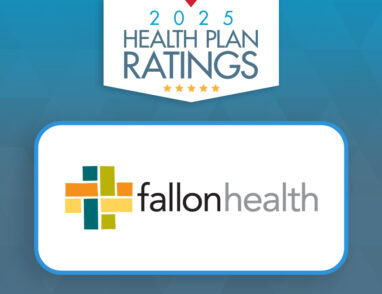Health Equity Measurement in Medicaid: White Paper Examines State of the Field
December 13, 2021 · NCQA Communications
A new white paper shows that an increasing number of states use explicit equity measurement and accountability in their managed care programs. The paper, which examines state Medicaid programs’ current health equity efforts, also suggests a common language around intent, goals, methods and expectations may help move the needle towards accountability for equitable care.
Evaluating Medicaid’s Use of Quality Measurement to Achieve Equity Goals anchors a larger project, funded by the California Health Care Foundation, that looks to lay the foundation for a standardized health equity measurement infrastructure.
The authors examine peer-reviewed and grey literature, review state contracts and public policy statements and conduct interviews with representatives from seven state Medicaid agencies. Their paper focuses on five themes:
- State Medicaid approaches to overall equity strategy
- Priority populations and areas of focus.
- Use of measurement.
- Health plan accountability and evaluating performance.
- Stakeholder and community engagement.
“I’m excited by the work that this paper reflects and the support it will provide stakeholders in understanding what the current state of play is in considering quality and equity together,” said Kristine Thurston Toppe, NCQA Assistant Vice President, State Affairs
State Medicaid Approaches Vary, but Equity Measurement Increasingly a Focus
State Medicaid agencies have demonstrated their commitment to addressing equity in health care quality and measurement, but the approaches vary widely by state. Many states stratify traditional quality measures by race, ethnicity or other characteristics to examine disparities, and a small but growing number of states are developing or implementing measures around social needs and social determinants of health. Alongside these efforts, some states have begun work to evaluate and improve the equity of the structures and processes that underly Medicaid policy.
Maternal and child health and communities of color are common priority areas of focus across states; other priority populations include specific geographies (e.g., rural/urban) and behavioral health and disability, among others. The authors found that several states are using stratification of existing quality measures in critical clinical areas such as diabetes, maternal and child health and blood pressure.
across states; other priority populations include specific geographies (e.g., rural/urban) and behavioral health and disability, among others. The authors found that several states are using stratification of existing quality measures in critical clinical areas such as diabetes, maternal and child health and blood pressure.
The review identifies over fifty distinct quality measures states use or plan to use for measuring equity goals. The authors were surprised by the diversity of measures, though the common areas of measurement – such as diabetes, maternal health and pediatrics – aligned with the priority areas states identified.
In addition to quantitative measures, multiple states highlight the value of qualitative information to inform their approaches to closing health equity gaps. Project principal investigator and NCQA Research Scientist Rachel Harrington, PhD, says states expressed that “when you try to act on the ground to make change, you have to have the why, not just the what” of the inequities you are trying to address.
Multiple states highlight the importance of building momentum through stakeholder engagement. States cite success with early engagement that includes bringing plans to the table to proactively identify and address roadblocks, adapt to the needs of specific populations and get buy-in for accountability. There is also opportunity to engage the community and plan members earlier in the process. While this is the exception, it is important for centering the voices of those served by the plans and state Medicaid agencies.
Despite the encouraging use of equity measurement in its various forms, accountability strategies in states vary, and are limited but growing in use. Financial incentives for equity performance are increasingly used, but still the exception. The widespread use of equity measures is stymied by a lack of clarity about the completeness, accuracy, and assumptions underlying the data from which the measures are calculated. For instance, do the data perpetuate racist structures via their labels for race and ethnicity?
California Health Care Foundation Senior Program Officer Katherine Haynes suggests that even before incentives for equitable performance, the effort may require “incentives for getting the fundamental data we need to have to be able to understand how we’re performing right now.”
What’s Next?
Understanding the current state of equity measurement will help us lay the groundwork for an accountability infrastructure for equitable health care, quality measurement and reporting. The lessons learned from states at the vanguard of this work can help inform other state Medicaid agencies, as well as other purchasers. Haynes notes, “Everybody across the nation is trying to figure out how to measure and improve health equity. There is innovation. There are different ways that people are working, and people who are ahead in integrating quality into value-based payment. We can learn from them all.”
Going forward, the project team will take the insights gained about the current state of play and use them to develop a recommended standardized health equity measurement framework, with core measurement domains and related core equity measures. The team will also begin evaluating different approaches to scoring or creating composites of equity measures to identify which are best fit for use in Medicaid. The team expects to release its final report in July 2022.
NCQA thanks our colleagues at the California Health Care Foundation for partnering with us in this important and rewarding work.







